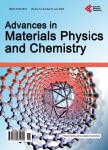Intense Visible Photoluminescence from C<sub>46</sub>H<sub>22</sub>N<sub>8</sub>O<sub>4</sub>KM (M = Co, Fe, Pb) Derivatives Thin Films
Intense Visible Photoluminescence from C<sub>46</sub>H<sub>22</sub>N<sub>8</sub>O<sub>4</sub>KM (M = Co, Fe, Pb) Derivatives Thin Films作者机构:不详
出 版 物:《Advances in Materials Physics and Chemistry》 (材料物理与化学进展(英文))
年 卷 期:2011年第1卷第3期
页 面:57-63页
主 题:Thin Films Optical Properties Photoluminescence
摘 要:Strong visible photoluminescence (PL) at room temperature is obtained from thermal-evaporated thin solid films of Metallophthalocyanine (M = Co, Fe, Pb) and double potassium salt from 1,8 dihydroxyan-thraquinone. The PL of all the investigated samples is observed with the naked eye in a bright background. The deconvolution of the normalized PL spectra shows that each PL spectrum is composed of four emission bands which peak at approximately the same energies of 2.1, 2.2 and 2.4 eV and whose intensities and widths depend upon the structure of the complexes. FTIR and ellipsometry are employed to investigate the structural differences among the films. The optical absorption of the films is also investigated to evaluate the changes in the electronic structure of these metal organic compounds, with respect to other metalphtalocya-nines thin films. Our results suggest that the visible PL comes from radiative transitions between energy lev-els associated to the double potassium salt coordination to the metallic ion in the phthalocyanine.



